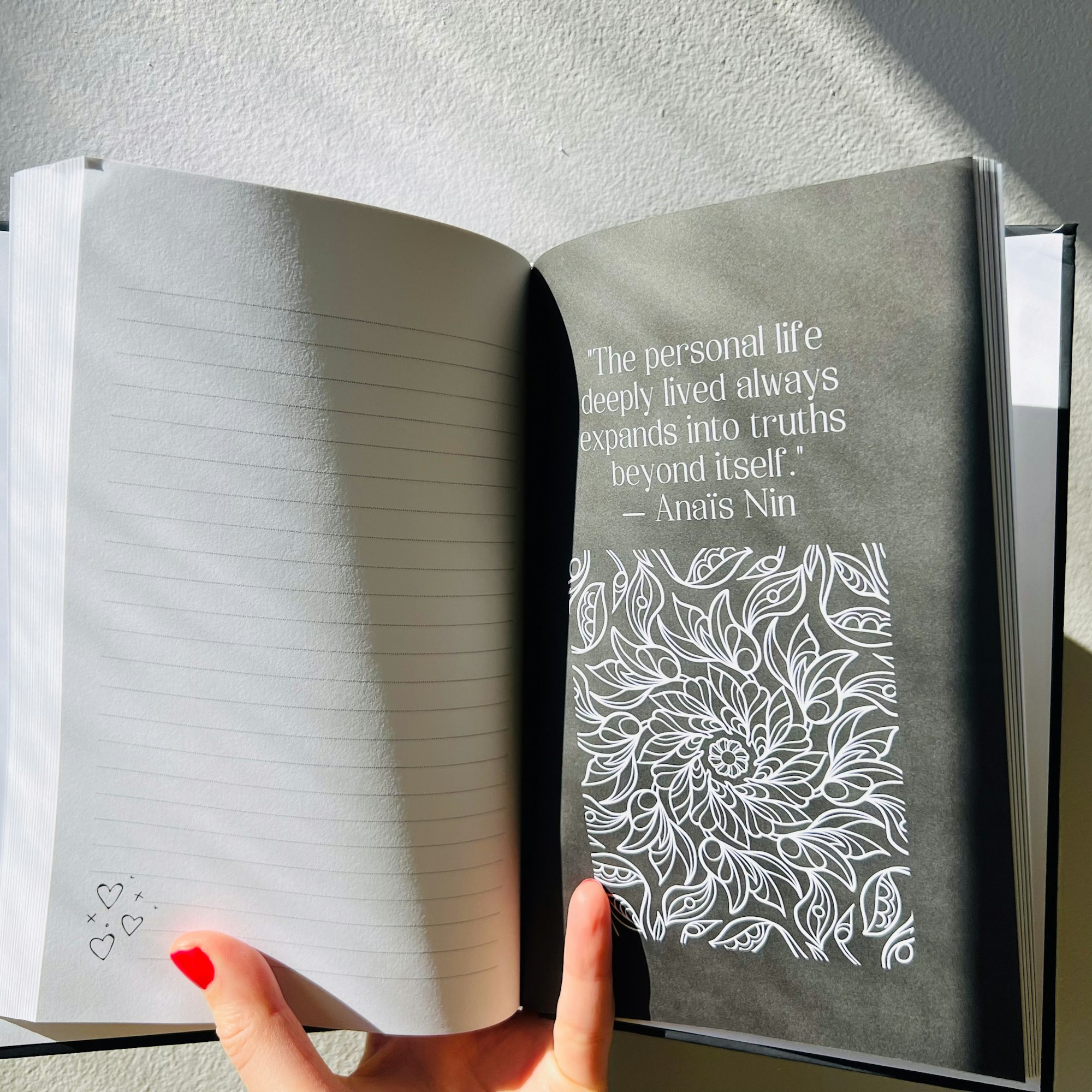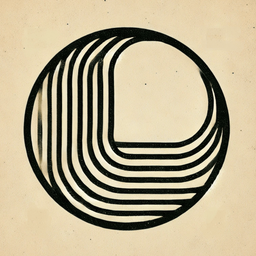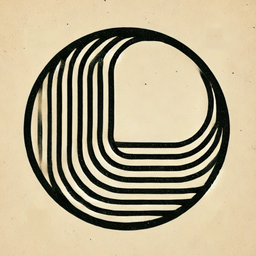12 Best Inner Work Books for a Deeper Self-Understanding (2025 Guide)
Discover the 12 best inner work books to deepen your self-understanding and emotional intelligence. This guide helps you choose, read, and integrate these books so they create real transformation—not just more information.

Most “self-help” tells you how to optimize your calendar, your habits, your output.
Inner work is different.
Inner work is what happens when you stop trying to upgrade the character you play in the world, and instead turn toward the one who’s been playing all the roles: the frightened child, the performer, the overachiever, the caretaker, the quiet rebel.
The right inner work book doesn’t just give you inspirational quotes. It hands you a mirror, a map, and sometimes a scalpel. It shows you:
- why you react the way you do
- where your patterns came from
- how your body, mind, and beliefs are carrying old stories
- and how to slowly, kindly rewrite them
This guide isn’t just a list of “good books.” It’s a practical map:
- 12 foundational inner work books, grouped by psychological, somatic, shadow, and spiritual angles
- clear guidance on who each book is for, and who might want to skip it
- concrete ways to turn reading into actual inner work using journaling and reflection (including how something like Life Note can sit beside you as a thinking partner)
You don’t need all 12. In fact, please don’t try. You need one or two that match where you are this season of your life.
What Counts as an “Inner Work” Book?
For this guide, an inner work book is not just “motivational” or “productivity-focused.”
To make the cut, a book needs to:
- Point inward, not outward
It’s less “how to manage your boss” and more “how your attachment patterns show up with your boss.” - Offer some kind of framework or practice
Models like trauma theory, Internal Family Systems (IFS), parts work, chakras, mindfulness, self-compassion, shadow work, somatic awareness, etc. - Invite you to do something uncomfortable but freeing
Question your identity, feel emotions you’ve avoided, notice stories you live inside, or meet rejected parts of yourself.
We’ll group the 12 books into four broad genres:
- Psychological & trauma-informed
- Somatic & embodiment-based
- Shadow work & parts work
- Spiritual & consciousness-based
Plus a couple of integrative texts that blend these.
Quick Overview: 12 Core Inner Work Books
Here’s a snapshot before we dive in:
| Book | Primary Lens | Best If You Want To… |
|---|---|---|
| The Body Keeps the Score – Bessel van der Kolk | Trauma, nervous system, body | Understand trauma, chronic anxiety, and how your body holds the past Medium |
| Adult Children of Emotionally Immature Parents – Lindsay Gibson | Family systems, emotional neglect | Finally name what felt “off” in your childhood and how it affects relationships danroberts.com |
| No Bad Parts – Richard Schwartz | Internal Family Systems, parts work | Meet your “inner parts” (critic, achiever, child) and work with them, not against them Amazon |
| The Language of Emotions – Karla McLaren | Emotions as intelligence | Learn how each emotion is trying to help you, not ruin you |
| Eastern Body, Western Mind – Anodea Judith | Chakras + Western psychology | Map your life history across 7 developmental/energetic centers powells.com |
| The Mountain Is You – Brianna Wiest | Self-sabotage, accessible | Get a modern, readable entry point into self-sabotage and inner conflict Amazon |
| The Untethered Soul – Michael A. Singer | Witness consciousness | Learn to watch your thoughts instead of drowning in them The Yoga Couple |
| The Power of Now – Eckhart Tolle | Presence, ego | Understand ego, pain-body, and what living in “now” actually looks like Attachment Project |
| The Inner Work (Mat & Ash) | Spiritual shadow + relationship | Explore inner work through spirituality, relationships, and shadow (esp. for couples) regpaq |
| Owning Your Own Shadow – Robert A. Johnson | Classic Jungian shadow | Short, potent intro to shadow and why your “dark side” is essential Kennys Bookshop |
| Self-Compassion – Kristin Neff | Compassion, psychology | Replace self-hate as your main “motivation system” with something saner Readingraphics |
| Radical Acceptance – Tara Brach | Buddhism + psychology | Heal shame and “I’m not enough” using mindfulness and compassion Scribd |
Now let’s go deeper, book by book.
1. The Body Keeps the Score – Bessel van der Kolk
(Trauma in the body, nervous system, and brain)
If your body is anxious but your mind can’t explain why, this is the x-ray.
Van der Kolk, a psychiatrist and trauma researcher, lays out how trauma literally reshapes the brain and nervous system, and why symptoms like hypervigilance, dissociation, and shutdown are adaptations, not defects.Medium
You’ll get:
- A deep understanding of PTSD, complex trauma, and developmental trauma
- Why talk therapy alone sometimes doesn’t move the needle
- Introductions to modalities like EMDR, yoga, neurofeedback, somatic work
Best for you if:
- You’ve had intense or confusing reactions in relationships or work and feel “broken” or “too much”
- You suspect childhood or chronic stress left a mark, even if “nothing terrible happened”
- You want to stop moralizing your symptoms and start understanding them
Be aware:
- It can be emotionally heavy. Read slowly.
- It’s not a workbook. It’s more “understand the terrain,” not “10 quick exercises.”
Life-Note-style practice while reading:
- Track moments where your body reacts strongly (tight chest, numbness, rage). Treat them as data, not failures.
After a chapter, journal:
“If my nervous system is trying to protect me, what exactly does it think it’s protecting me from right now?”
2. Adult Children of Emotionally Immature Parents – Lindsay C. Gibson
This is the book many people read and say: “Oh. So it wasn’t just me.”
Gibson describes four types of emotionally immature parents and shows how their limitations create patterns in children: people-pleasing, emotional loneliness, hyper-independence, and difficulty naming needs.danroberts.com
You’ll get:
- Language for experiences you probably never had words for
- A clearer picture of emotional neglect (not just obvious abuse)
- Practical strategies for relating to your parents now without abandoning yourself
Best for you if:
- You had “good parents” on paper, but emotionally something always felt missing
- You minimize your childhood because “others had it worse,” yet your relationships feel haunted
- You repeatedly date or befriend emotionally unavailable people
Be aware:
- The title can trigger defensiveness. This is not about blaming forever; it’s about seeing clearly.
- You may feel grief as you finally name what you didn’t get.
Journaling prompts to use:
- “What did I have to become in my family to feel safe or loved?”
- “What feelings were not allowed in my home?”
- “How do those rules still run my life?”
Pairing this with Life Note or another journaling tool lets you track patterns across entries: when do “old parent dynamics” show up in your week?
3. No Bad Parts – Richard Schwartz
(Internal Family Systems in plain language)
If you’ve ever thought, “Part of me wants this, part of me wants that,” congratulations: you’re already speaking IFS.
Schwartz, the founder of Internal Family Systems, argues that we are made of parts—inner protectors, exiles, managers—and a core compassionate Self. None of the parts are “bad”; they’re all trying to help, often in extreme or outdated ways.Amazon
You’ll get:
- A surprisingly gentle way to relate to your inner critic, addict, perfectionist, overachiever
- Concrete dialogues and exercises for meeting and unburdening parts
- A deeper sense that there is something wise in you beyond all your strategies
Best for you if:
- You’re tired of fighting yourself and want to understand your internal conflicts
- You’ve tried “discipline” and “hustle” and still feel sabotaged from the inside
- You like the idea of inner characters and dialogues
Be aware:
- Parts language can feel weird at first (“A part of me that smokes?”), but it becomes incredibly intuitive.
- This book can surface a lot. Go slow.
Try this while reading:
- Ask in your journal: “What does this part wish it could relax about?”
When you feel strong emotion, pause and write:
“A part of me is terrified that…”
“A part of me believes that if I don’t _____, then _____ will happen.”
In a Life Note context, this maps beautifully to “mentors talking to your parts”—you can literally ask: “How would Jung talk to the part of me that’s terrified of failing?”
4. The Language of Emotions – Karla McLaren
If you were taught that anger is bad, sadness is weakness, and fear is irrational, this book is corrective medicine.
McLaren treats emotions as a form of intelligence—each with a function, message, and healthy expression. Instead of “calm down,” it’s “listen more precisely.”Words & Contemplations
You’ll get:
- Detailed breakdowns of emotions: fear, anger, shame, envy, jealousy, etc.
- Practices for working with each emotion somatically and cognitively
- A new respect for emotions you’ve spent years trying to “fix”
Best for you if:
- You’re emotionally literate “in theory,” but still overwhelmed by your feelings
- You grew up in a family that minimized or exploded emotionally
- You want a systematic way to relate to emotions without spiritual bypassing
Be aware:
- It’s dense. Treat it like a reference manual and choose one emotion at a time.
- You’ll get much more if you actively practice, not just read.
Journaling idea:
Each week, pick one emotion (e.g., anger) and log:
- When it shows up
- What boundary or need it might be protecting
- One small, respectful action you took in response
5. Eastern Body, Western Mind – Anodea Judith
(Chakras meet developmental psychology)
This is a bridge book: it takes an Eastern chakra model and maps it onto Western developmental stages and psychology.powells.com
Each chakra becomes a lens on a life theme:
- Root: safety, belonging
- Sacral: pleasure, feelings, sexuality
- Solar plexus: will, autonomy
- Heart: love, empathy
- Throat: voice, truth
- Third eye: insight, patterns
- Crown: meaning, spirituality
You’ll get:
- A structured way to scan your life history: “Where did things get stuck?”
- Psychological explanations for energetic imbalances
- Practices to rebalance each center (beliefs, body, behavior)
Best for you if:
- You like both psychology and energy work, not either/or
- You want a long-view map of your whole life, not just symptom relief
- You’re doing yoga or meditation and want a deeper inner framework
Be aware:
- It’s long and heavy. Think “study over months,” not “weekend read.”
- It’s more conceptual than exercise-driven, but the insights can be huge.
How to use it with journaling:
For each chakra, write:
- “What did love/safety/power look like in my family?”
- “What belief did I form about myself at this level?”
- “How does that belief still show up in my work/relationships/creativity?”
6. The Mountain Is You – Brianna Wiest
(Self-sabotage for the TikTok generation, in a good way)
Wiest writes in a modern, accessible style about self-sabotage, resistance, and why we keep recreating what hurts us. The “mountain” is you—your old patterns, fears, and adaptations.Amazon
You’ll get:
- Simple language for complex patterns like avoidance, procrastination, emotional addiction
- Reframes that turn “I’m broken” into “I’m trying to stay safe using outdated tools”
- Bite-sized sections that work well with journaling
Best for you if:
- You want something easier to read than dense clinical or spiritual texts
- You know you’re the one blocking your progress but don’t fully know why
- You’re early in your inner work journey and need an inviting first step
Be aware:
- It’s more motivational and conceptual than scientifically rigorous.
- Depth comes from how honestly you apply it, not from scholarly detail.
Life-Note-style prompt:
- “In what ways am I choosing short-term comfort over long-term self-respect?”
- “If my self-sabotage was trying to protect me from something, what would it be?”
7. The Untethered Soul – Michael A. Singer
(Become the watcher of your mind)
This is the classic “you are not your thoughts” book. Singer walks you through the experience of stepping back from the constant mental narrative and learning to relate differently to fear, pain, and desire.The Yoga Couple
You’ll get:
- Clear, experiential explanations of “witness consciousness”
- Practices for relaxing instead of contracting around uncomfortable feelings
- A spiritual but not dogmatic approach to inner freedom
Best for you if:
- You’re exhausted by your own overthinking and want an inner quiet that doesn’t depend on external success
- You like spiritual language but also want practical mental shifts
- Meditation appeals to you, but you need conceptual support to actually do it
Be aware:
- It’s not about trauma processing or detailed psychology. It’s about your relationship with inner experience.
- Some people find the tone a bit “floaty”; pair it with grounded journaling.
Practice:
After a triggering moment, write:
- “What is my mind saying?”
- “What physical sensation is here?”
- “What if I were simply the one noticing both?”
8. The Power of Now – Eckhart Tolle
This is heavier on concept but foundational for many people. Tolle unpacks ego, the “pain-body,” and how identification with thought and time creates suffering.Attachment Project
You’ll get:
- A deep explanation of why living in the future and past feels so painful
- Concepts like “pain-body” that help explain emotional flashbacks
- Short practices for returning to the present moment
Best for you if:
- You’re philosophically inclined and enjoy big-picture thinking
- You’ve tasted presence in meditation, nature, or flow states and want to stabilize it
- You resonate with non-dual / contemplative teachings
Be aware:
- For trauma survivors, “just be present” can feel invalidating if misused. Use in combination with trauma-aware work, not as a bypass.
- The language can be abstract; keep asking, “What does this mean for this Tuesday at 3pm when my boss emails me?”
Journaling prompt:
- “Where today did I live mostly in mental time instead of direct experience?”
- “What concrete thing helped me return to here-and-now, even for 10 seconds?”
9. The Inner Work – Mat & Ash (The Yoga Couple)
This one blends spirituality, shadow, relationship work, and healing around love, sex, and partnership. It’s written by a couple, for individuals and couples doing inner work around intimacy and projection.regpaq
You’ll get:
- A look at how childhood patterns show up specifically in romantic relationship
- Practical journaling and reflection exercises around triggers, attachment, and shadow
- A spiritual frame that’s rooted in yoga philosophy
Best for you if:
- You notice the same argument replaying in different relationships
- You’re doing spiritual work but keep “losing it” only with your partner
- You want language for how your unhealed places collide with someone else’s
Be aware:
- It’s relationship-centric; if you’re mainly focused on career/identity, pick another first.
- Has more spiritual/new-age flavor; see if the tone resonates.
Practice idea:
Journal two columns:
- “What I blame my partner (or ex) for”
- “What that might mirror in my own unresolved patterns”
Then ask, “What is the inner work inside me that this relationship keeps pointing at?”
10. Owning Your Own Shadow – Robert A. Johnson
(Short, sharp Jungian wisdom)
At ~128 pages, this is a compact bomb. Johnson explains what the “shadow” is—everything we repress, deny, or disown—and why wholeness depends on reclaiming it.Kennys Bookshop
You’ll get:
- A very clear definition of shadow, projection, and how we dump our disowned traits on others
- Stories and myths that illustrate shadow in action
- A sobering reminder that your “niceness” may be partly repression
Best for you if:
- You want a serious but accessible Jungian intro
- You’re ready to question your self-image
- You’ve noticed that the traits you hate in others have a suspiciously familiar flavor
Be aware:
- It’s more conceptual than exercise-heavy; you’ll need journaling to make it practical.
- Can be confronting. Good.
Journaling prompt:
- “The people I can’t stand are often: _______. Where does that energy live in me, even 1%?”
- “What am I afraid would happen if I let myself be more [angry / assertive / vulnerable / joyful]?”
11. Self-Compassion – Kristin Neff
Neff is one of the primary researchers on self-compassion. She shows, with studies and stories, that harsh self-criticism is not the fuel of greatness—it’s often the handbrake.Readingraphics+1
You’ll get:
- Clear breakdown of self-kindness, common humanity, and mindfulness as the three pillars of self-compassion
- Exercises and meditations to practice a new inner tone
- Data showing self-compassion can increase resilience and healthy motivation
Best for you if:
- Your inner voice is brutal and you secretly believe you need that brutality
- You find kindness toward yourself suspicious or weak
- You intellectually understand compassion but don’t apply it inward
Be aware:
- It can feel “soft” if you’re used to high-performance, grind-culture mindsets. That’s the point.
- Real self-compassion sometimes means firm boundaries and saying no, not just self-soothing.
Journaling:
- Write down a recent mistake. Then answer: “How would I talk to a friend in the exact same situation?”
- Notice the difference in tone between your default and your compassionate version.
12. Radical Acceptance – Tara Brach
(Shame, “not enough,” and the trance of unworthiness)
Tara Brach blends Buddhist mindfulness with Western psychology to address the core wound so many of these books circle: “Something is wrong with me.”Scribd
You’ll get:
- A deep exploration of how shame and self-rejection distort your whole experience
- Practices of “RAIN” (Recognize, Allow, Investigate, Nurture) for working with difficult states
- Stories and meditations that make the work feel gentle but real
Best for you if:
- “I’m not enough” is your background music
- You resonate with contemplative or Buddhist-inspired perspectives
- You want both heart and clarity
Be aware:
- Some exercises are meditation-based; if you resist stillness, combine with journaling.
- It can stir old grief; pace yourself.
Journaling prompt:
- “Where in my life right now do I feel fundamentally ‘not enough’?”
- Use RAIN in writing: Recognize (name), Allow (“this is here”), Investigate (curious questions), Nurture (what comfort is needed?).
How to Actually Read These Books so They Change You
Inner work books are not meant to be binged on airplanes and then forgotten.
Think of each one as a 6–12-week container of practice.
Step 1: Read for a single question
Before starting any book, write at the front:
“The question I’m secretly hoping this book helps me with is: ______.”
Examples:
- “Why do I shut down in conflict?”
- “Why do I keep overworking even when I’m exhausted?”
- “Why do I feel numb when I should feel happy?”
Every chapter, ask: “How does this speak to my question?”
Step 2: Pair every idea with 1 journal question
Don’t just highlight. Translate.
For each meaningful concept, create a prompt:
- From The Body Keeps the Score:
Concept – hypervigilance
→ Prompt: “Where in my week did my body act as if danger was present, even when it wasn’t?” - From No Bad Parts:
Concept – protective part
→ Prompt: “Which part spoke loudest today, and what was it afraid would happen if it relaxed?” - From Self-Compassion:
Concept – common humanity
→ Prompt: “Who else in the world is probably struggling with something like this right now?”
Then actually answer these in a journal or tool like Life Note—where mentors can respond, reflect, and help you see patterns over time.
Step 3: Give yourself a rhythm, not a deadline
Ideal cadence:
- 2–5 pages per day
- 10–20 minutes of journaling after reading
- Weekly: a short synthesis of “What I tried” and “What I noticed”
You’re re-wiring your nervous system, not cramming for an exam.
Sample “Inner Work Stacks” for Different Seasons of Life
You don’t need 12 books. You need the right stack for your current life problem.
1. For the anxious overthinker
- The Untethered Soul – to see you are not your thoughts
- Self-Compassion – to stop bullying yourself about those thoughts
- Add Life Note journaling prompts like:
- “What did my mind rehearse 5 times today?”
- “If that thought wasn’t the enemy but a scared child, what would I say to it?”
2. For the relationship pattern repeater
- Adult Children of Emotionally Immature Parents – to name where patterns started
- The Inner Work (Mat & Ash) – to see how they show up in love now
- Owning Your Own Shadow – to notice what you dump on partners
Journal:
- “How is my current relationship a sequel to an old story?”
- “What am I asking my partner to fix that started before we even met?”
3. For the trauma-aware builder / entrepreneur
- The Body Keeps the Score – to understand your nervous system
- No Bad Parts – to work with inner critic and overachiever parts
- The Mountain Is You – as a lighter, accessible companion
Journal:
- “What part of me runs my business decisions when I feel threatened?”
- “What would it look like to let a calmer part take the wheel for one small decision this week?”
Using Life Note (or Any AI Journal) as a Reading Partner
Books are like mentors. A journaling companion like Life Note is like a conversation with those mentors about your life.
Here’s how to weave it in:
- After reading a chapter, paste a key paragraph or summarize it in your own words.
- Add a journal entry: “Here’s where I see this in my life this week.”
- Ask your AI mentor something specific:
- “Carl Jung, what might this dream mean in light of what I just read in Eastern Body, Western Mind?”
- “Tara Brach, how would you guide me through this shame spiral using Radical Acceptance?”
- At the end of the week, review Life Note’s reflections or weekly letters to spot patterns:
- recurring triggers
- repeated phrases you use
- emotions that keep showing up
The point is not to outsource your wisdom. It’s to have a mirror that never gets tired of asking you good questions and showing you your own words back, in patterns.
FAQs
1. Where should I start if I’m totally new to inner work?
Pick one of these based on what feels most alive:
- Overthinking / mental noise → The Untethered Soul
- Childhood stuff / family patterns → Adult Children of Emotionally Immature Parents
- Trauma, anxiety, body sensations → The Body Keeps the Score
- “I’m too hard on myself” → Self-Compassion
- “I know I’m the one in my own way” → The Mountain Is You
Then commit to:
- 1 book
- 6–8 weeks
- 10–20 minutes of reading + journaling most days
Depth beats quantity.
2. Can inner work books replace therapy?
No.
They can:
- give you language for what you feel
- normalize your experience
- help you see patterns
- make therapy more efficient because you show up already self-aware
But if you’re dealing with:
- suicidal thoughts
- severe depression or anxiety
- active abuse
- complex trauma
…then pairing books with a qualified therapist is the wise move. Books and AI mentors can walk beside you, but they are not emergency services or full relational containers.
Closing Thought
Most people read inner work books like weather reports: “Interesting forecast,” and then they go outside without an umbrella.
If you treat these 12 books as tools instead of content, they can genuinely change the texture of your days:
- how you interpret a tense email
- how you speak to yourself when you mess up
- how you respond when your chest tightens for “no reason”
- how you hold that old story that you’re too much, or not enough, or too late
Pick one book. Pair it with one journal. Add one consistent practice.
Let that be your inner work lab for a season.
When you’re ready, we can design your next stack—books, prompts, and mentor voices—around whatever mountain you’re currently climbing.
Ready to turn your reading into a dynamic conversation? Life Note is the world’s first AI life companion designed to help you integrate the wisdom from your favorite inner work books. Go beyond passive reading and start a dialogue with your inner self. Discover the future of self-discovery at https://www.mylifenote.ai.
Explore More






